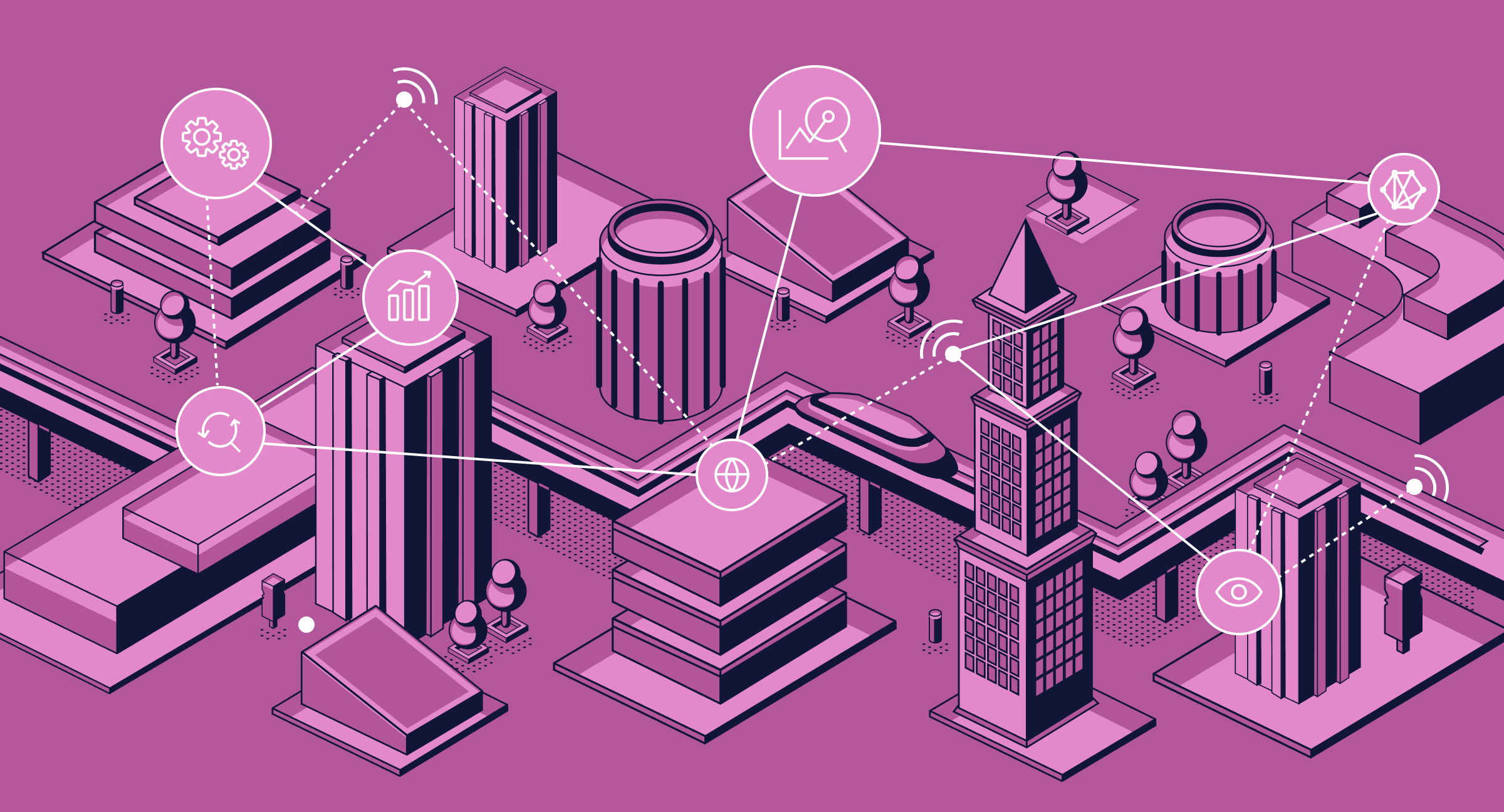The modern world requires radical business changes. What was in demand and worked yesterday is not relevant today. A saturated market, high competition, and customer demands are some reasons why digital business transformation is necessary. Introducing new technologies is a step into the future, which is coming today.
This article discusses examples of digital transformation in marketing, utilities, pharma, automotive, and the public sector.
Key points
What does successful digital transformation mean?
Digital transformation is a method of introducing new technologies into a company’s business processes. Digital technologies are used to change and improve the operations of a business, making it scalable, efficient, and more profitable.
Successful digital business transformation aims to improve the customer experience through the use of new technologies. Not so long ago, introducing social media into the business sphere could be called a revolution. Today, this is not enough. Companies need modern technology to improve and advance.
Need help to understand whether your company requires digital transformation? Contact us!
Examples of digital transformation

We have collected the best examples of digital transformation in different industries.
Digital transformation in marketing
Digital transformation has significantly impacted marketing, revolutionizing how companies engage with customers, analyze data, and tailor their strategies. Here are some examples of digital transformation in marketing.
Data analytics and personalization:
- Customer segmentation. Utilizing data analytics to segment audiences based on demographics, behaviors, and preferences allows for more personalized and targeted marketing campaigns.
- Predictive analytics. Using historical data to predict future customer behaviors enables companies to anticipate needs and tailor offers in real-time.
Augmented Reality (AR) and Virtual Reality (VR):
- AR product visualization. Allowing customers to visualize products in real-world settings using augmented reality enhances the shopping experience and reduces purchase uncertainty.
- VR brand experiences. Creating immersive virtual reality experiences to showcase products, engage customers, and tell brand stories.
Chatbots and AI-powered customer service:
- Chatbot assistance. Digital transformation forces implementing AI-driven chatbots to provide real-time customer support, answer queries, and guide users through the buying process.
- Conversational marketing. Companies use AI-powered chatbots to engage prospects in personalized conversations, qualify leads, and schedule appointments.
Marketing attribution and measurement:
- Multi-touch attribution. Implementing attribution models to track and measure the impact of various touchpoints in the customer journey helps optimize marketing budgets.
- Marketing analytics dashboards. Digital transformation allows data visualization tools to monitor key performance indicators (KPIs), track campaign effectiveness, and make data-driven decisions.
These examples illustrate how digital transformation has reshaped the marketing landscape, enabling businesses to reach and engage customers more effectively through data-driven strategies and innovative technologies.
Digital transformation in utilities
Digital transformation in the utilities sector involves the integration of digital technologies and data-driven solutions to modernize and optimize the generation, distribution, and consumption of energy and water resources. Here are some examples of digital transformation in the utilities industry.
Smart grids and energy management:
- Advanced metering infrastructure (AMI). Installing smart meters that provide real-time data on energy consumption, enabling accurate billing, and helping customers manage their energy usage is a part of digital transformation.
- Grid automation. Using sensors, communication networks, and control systems to monitor and manage the electricity grid in real-time optimizes power distribution and reduces outages.
- Distributed energy resources (DERs). Digital transformation forces integrating renewable energy sources, energy storage systems, and demand response programs into the grid to enhance reliability and sustainability.
Renewable Energy Integration:
- Solar and wind forecasting. It is possible to optimize the integration of variable renewable energy sources into the grid by utilizing weather data and predictive analytics to forecast solar and wind energy generation.
- Microgrids. Creating localized energy systems that can operate independently or in conjunction with the main grid provides resilience during outages and supports renewable energy integration.
Energy efficiency and demand response:
- Energy management systems (EMS). Implementing software solutions that monitor energy consumption patterns enables organizations to identify energy savings and efficiency improvement opportunities.
Predictive maintenance:
- Asset performance management (APM). Digital transformation forces data analytics and predictive maintenance algorithms to monitor the condition of utility infrastructure, such as power plants and pipelines. It also makes it possible to schedule maintenance proactively to prevent failures.
Data analytics and AI:
- Energy market analysis. It is possible to use data analytics to analyze energy market trends, optimize energy procurement strategies, and manage energy costs effectively.
- AI-driven load forecasting. Applying AI algorithms to forecast energy demand and supply helps utilities plan their operations and resources more accurately.
These examples highlight how digital transformation is revolutionizing the utilities sector, improving operational efficiency, enhancing sustainability, and enabling greater customer engagement and control over energy and water resources.
Digital transformation in pharma
Digital transformation in the pharmaceutical industry refers to integrating digital technologies and data-driven approaches into various aspects of drug discovery, development, manufacturing, distribution, and patient care. Here are some examples of digital transformation in pharma.
Drug discovery and development:
- Computational modeling and simulation. Using advanced computational techniques to model and simulate drug interactions, pharma companies can predict potential drug candidates and optimize molecular structures.
- Artificial Intelligence (AI) in drug discovery. Employing AI algorithms to analyze vast datasets and identify potential drug targets allows for speeding up the discovery process.
- High-throughput screening. Pharma companies use automated platforms and robotics to test thousands of compounds for their potential in drug development.
Clinical trials:
- E-clinical trials. Implementing electronic data capture (EDC) systems and wearable devices to collect real-time patient data during clinical trials improves data accuracy and reduces manual entry errors.
- Remote patient monitoring. Many organizations use digital health technologies to monitor patients’ health remotely, enabling more efficient and patient-centric clinical trials.
Manufacturing and supply chain:
- Smart manufacturing. Incorporating Internet of Things (IoT) devices and sensors in pharmaceutical manufacturing processes can help better monitor equipment, optimize production, and maintain quality control.
- Blockchain for supply chain transparency. Implementing blockchain technology to enhance transparency and traceability in the pharmaceutical supply chain reduces the risk of counterfeit drugs.
Personalized medicine:
- Genomic data analysis. Using genomic and molecular data to tailor treatments to individual patients’ genetic profiles can increase treatment efficacy and minimize side effects.
- Data analytics for treatment optimization. Analyzing patient data to optimize treatment plans and predict patient response to medications is necessary in the pharma industry.
These examples demonstrate how digital transformation is reshaping various aspects of the pharmaceutical industry, from research and development to patient care, aiming to improve outcomes and advance healthcare.
Digital transformation in automotive
Digital transformation in the automotive industry involves the integration of digital technologies and data-driven solutions to revolutionize various aspects of vehicle design, manufacturing, sales, and customer experience. Here are some examples of digital transformation in the automotive sector.
Connected cars and IoT:
- Telematics and remote diagnostics. Vehicles are equipped with sensors and connectivity features that enable real-time monitoring of vehicle health, remote diagnostics, and predictive maintenance.
- Vehicle-to-Vehicle (V2V) and Vehicle-to-Infrastructure (V2I) communication. Cars communicate with each other and traffic infrastructure to enhance safety, traffic management, and autonomous driving.
Supply chain management:
- Blockchain for transparency. Companies implement blockchain technology to enhance transparency and traceability in the automotive supply chain, from sourcing raw materials to distribution.
- Predictive analytics for demand forecasting. Using data analytics to forecast vehicle and component demand, optimize production, and reduce inventory costs.
These examples illustrate how digital transformation is reshaping the automotive industry, leading to smarter, safer, and more sustainable transportation solutions while also improving the overall customer experience.
Digital transformation in the public sector
Digital transformation in the public sector involves adopting digital technologies and data-driven approaches to improve government operations, enhance public services, and engage citizens more effectively. Here are some examples of digital transformation in the public sector.
E-government and online services:
- Digital portals. Governments create user-friendly websites and portals where citizens can access various public services, such as applying for permits, paying taxes, and renewing licenses online.
- Digital Identity: Implementing secure digital identity systems that allow citizens to authenticate themselves electronically, simplifying access to government services.
Open data and transparency:
- Open data platforms. Governments publish datasets online, making public data accessible to citizens, researchers, and businesses for analysis and innovation.
- Transparency dashboards. Providing real-time data and visualizations on government spending, project progress, and performance metrics to promote transparency and accountability.
Smart cities and urban planning:
- IoT and sensor networks. Authorities deploy sensors and IoT devices to monitor urban infrastructure, traffic, and public services, enabling data-driven urban planning and management.
- Smart mobility. Implementing digital transportation solutions changes the traffic situation in big cities. We mean real-time transit information, ride-sharing apps, and electric vehicle charging networks.
Education and E-learning:
- Online learning platforms. Providing digital learning resources, virtual classrooms, and e-learning platforms enhances education and skill development access.
- Digital libraries. Online access to books, journals, and educational materials promotes lifelong learning.
Crisis management and disaster response:
- Emergency alert systems. Governments implement sending real-time alerts and updates to citizens through various digital channels during emergencies or natural disasters.
- Geospatial Mapping and Analysis: Using GIS and mapping technologies to visualize and analyze disaster scenarios, aiding in response planning.
These examples demonstrate how digital transformation reshapes the public sector, improves service delivery, increases efficiency, and enhances citizens’ engagement with government entities.
Conclusion
Investing in digital transformation is not just a step into the future. Growing your company, increasing profitability, and building new, modern, and advanced customer relationships are necessary. Undertaking transformation is a must, but how do you know if your company is ready for a digital transformation?
Initially, you need to think through the purpose of doing so. Understanding clear objectives will allow you to identify needs and find ways to fulfill them. For this purpose, it is recommended to contact specialists who will conduct detailed analyses and study the company’s situation. SoloWay Tech offers you a great solution – developing a digital transformation strategy. We can conduct detailed market research, analyze the target audience and propose a strategy for your company’s digital transformation. Want to transform your company? Contact us!




